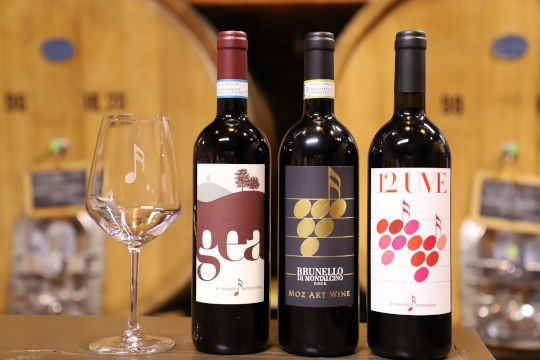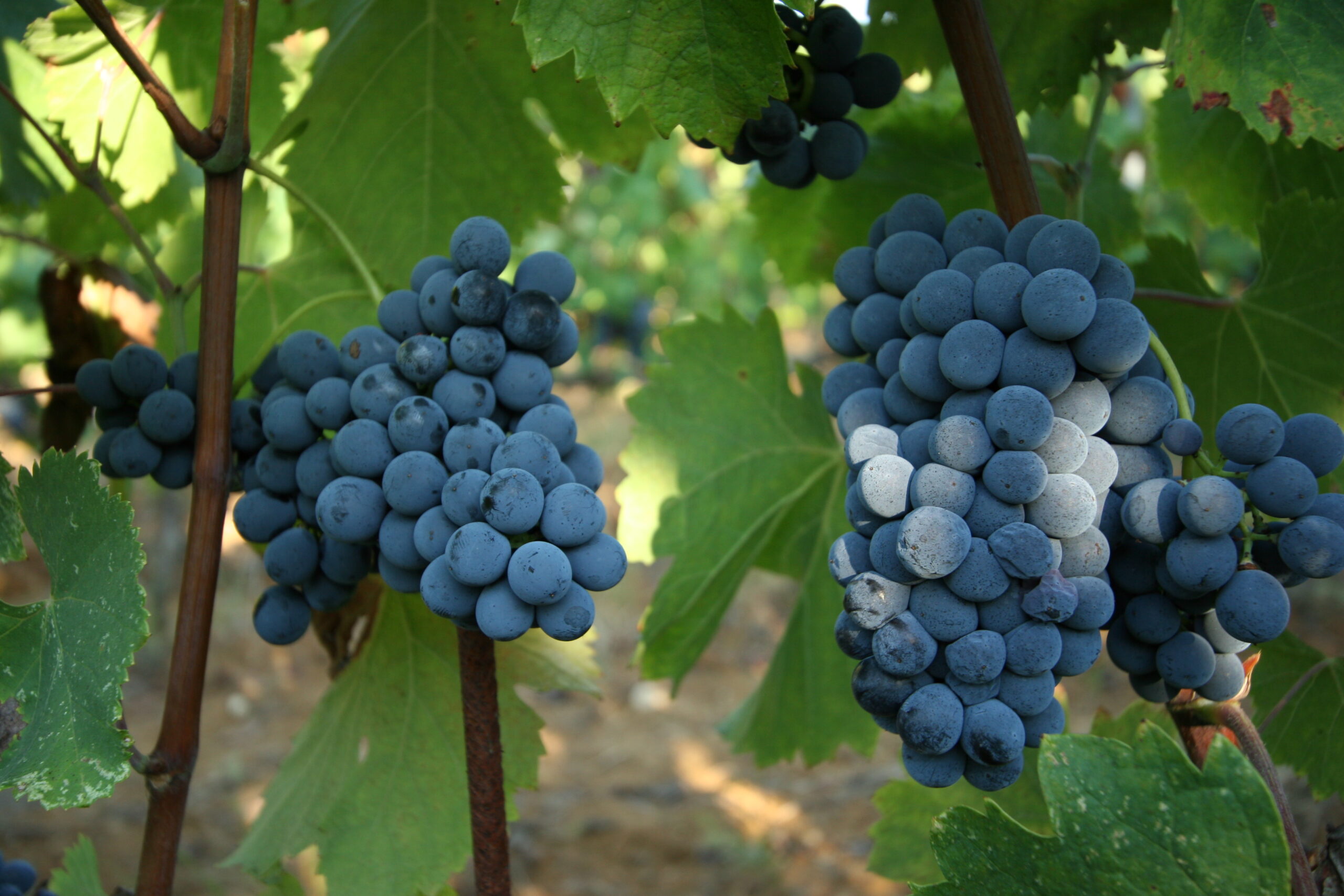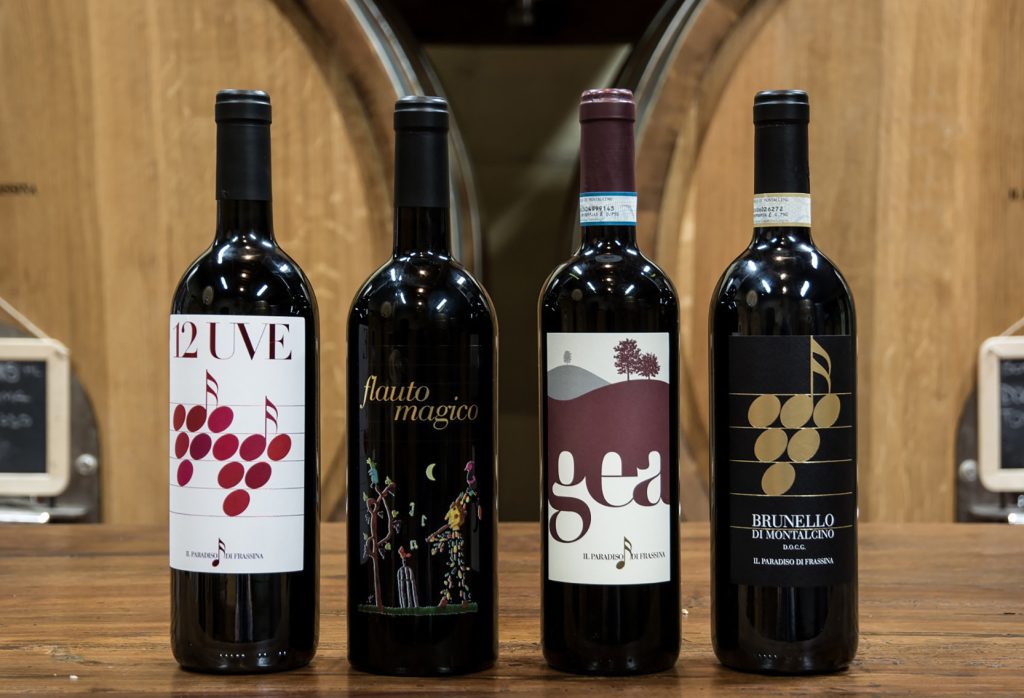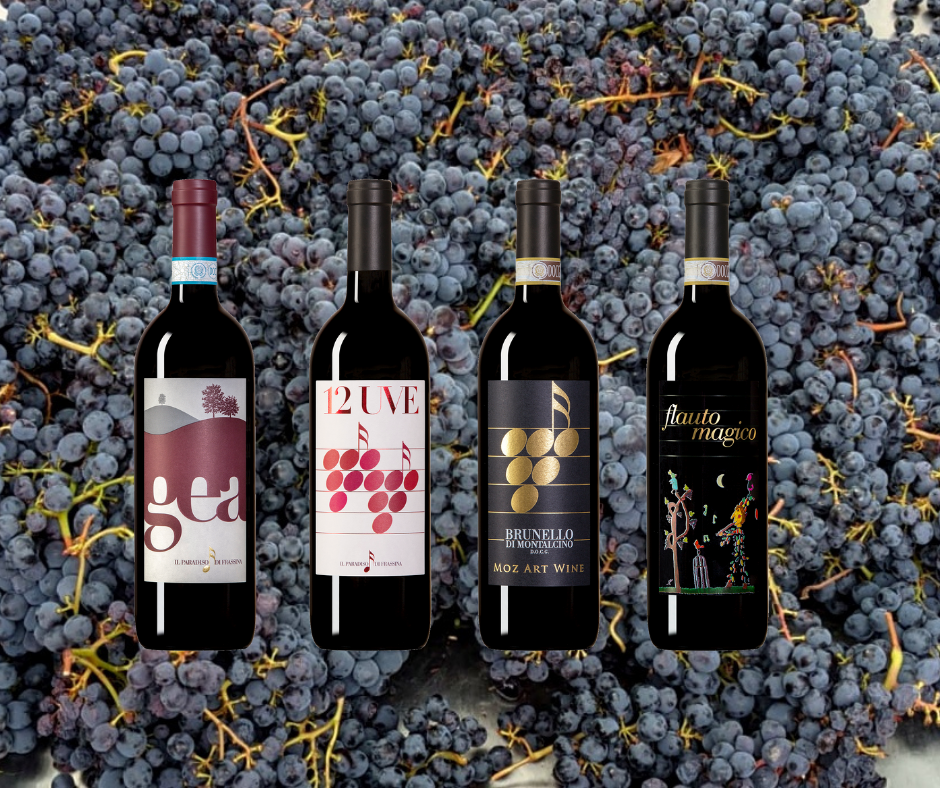The phases of a vintage: the thinning of the bunches and the defoliation of the vine
The phases of a whole vintage are many and all are very important. As we have seen in our article dedicated to the choice of the sprouts and the control of the threads in the vineyard, they accompany the life of a vineyard every day, up to the best known event which is the grape harvest.
During this week we have been busy with the thinning of the bunches and the defoliation of the vine; two common and widespread cultivation practices that are carried out in the period before the grape harvest.
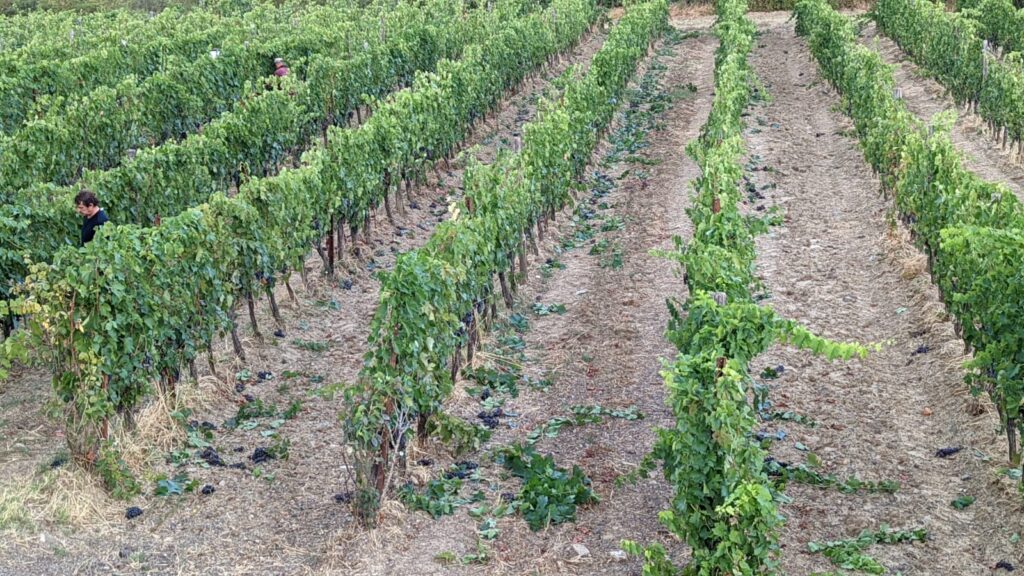
The defoliation of the vine
The defoliation of the vine in the cluster area consists in removing part of the leaves in the fruiting area. The defoliation is carried out for two reasons: the first is to facilitate the future harvesting during the grape harvest, in order to find the bunch clean enough, and the second is to give more light to the remaining bunches and also favor their ventilation.

This year, in fact, the clusters were covered enough by leaves to avoid burns and sunstrokes due to the intense heat. In fact, we have adopted a series of solutions to counteract the excessive heat and the water shortage in the vineyard, therefore without proceeding as usual with the topping and the leaf removal practices.
Now that heat is less intense and that we are close to the grape harvest, it is necessary to leaf through to ensure that the bunches take all the possible light so to obtain their perfect ripeness.
The thinning of the bunches
The thinning of the bunches allows to balance the grape production in order to have better qualitative productions.
In all areas, including the one for the production of the famous Brunello di Montalcino wine, where there is a disciplinary of production which establishes maximum quantities per hectare, it is necessary to reduce the production load per plant.
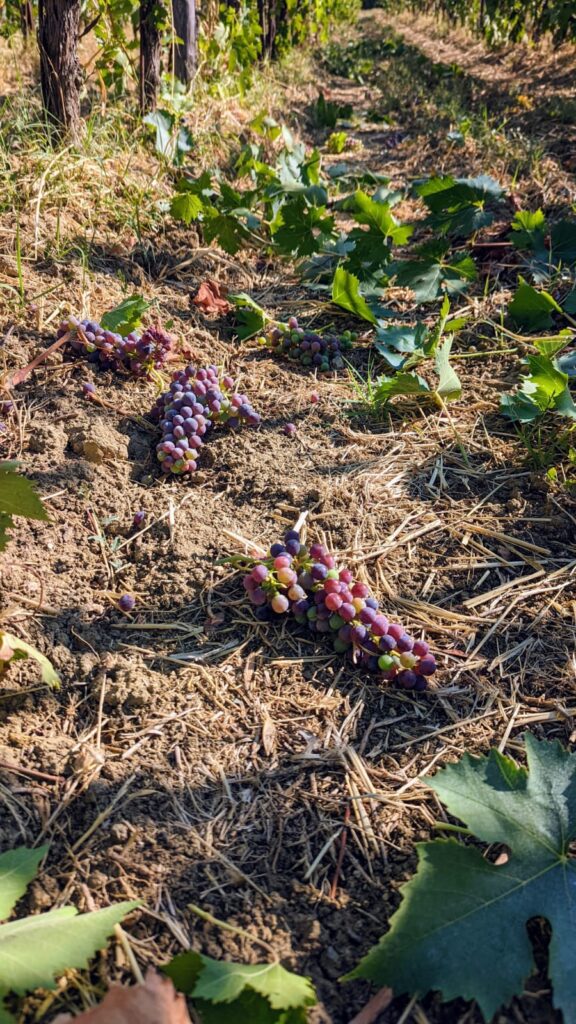
This is important to reach that maximum quantity and not exceed it, and above all to make the remaining bunches ripen perfectly well. In fact, in case an excessive quantity of clusters is left per plant, it happens that the plant cannot bring them all to perfect ripeness.
We wait for the beginning of the ripening of the grapes, so not in May or in June, to decide which bunches are to be cut. For instance, we notice that a bunch is ripening worse or it is placed in a disadvantaged position and then it is cut to the advantage of the better positioned bunches.
Usually the bunches placed high over the production cord and also those that are far from the trunk are eliminated because they are the ones that receive the lymph and all the various nutrients with more difficulty. It is therefore a question of finding the right balance to get perfectly healthy and ripe bunches.

